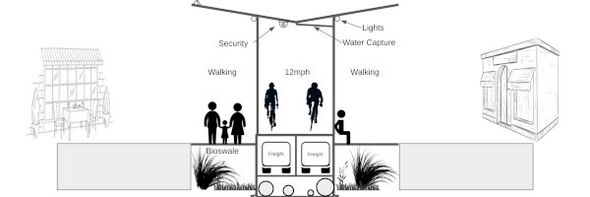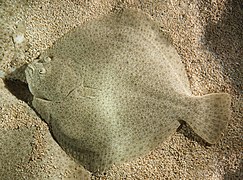Active Street
| Active Street | |
|---|---|
 Active Street™ | |
| Team Organizations | Urban.Systems |
| Team Leaders | Wilfred Pinfold |
| Participating Municipalities | Cornelius OR |
| Sectors | Transportation |
| Status | Concept only Stage |
| Last Updated | May 1, 2024 |
Summary
The vision to connect the end of the TriMet MAX line in Hillsboro to the Banks-Vernonia State Trail… has been a part of city and regional plans for many years. The section of this trail that runs along an old rail line between Hillsboro and Forrest grove offers some exciting opportunities for this Active Street™ concept. The Active Street™ concept combines active modes of transit such as walking and cycling with Low-speed electric vehicles (LSEVs). LSEV are a type of electric vehicle that operate at speeds below 35 miles per hour. These vehicles are typically smaller and more maneuverable than traditional vehicles, making them ideal for short trips within communities and urban areas. LSEVs are often used for personal transportation, delivery, and commercial purposes. They are known for being environmentally friendly, as they emit zero emissions and are powered by clean, renewable electricity.
- KenguruCar.jpeg
Car (Community Cars Inc)
- KK6011-Electric-Cargo-Trike.jpg
[1] (Kuake Cargo)
COMET electric vehicle (Pangia)
Xiaomi M365 (Xiaomi)
Cargo_bike (London Cargo Bike)
Canthigaster valentini (Valentinni's sharpnose puffer)
 Dactylopterus volitans (Flying gurnard)
Dactylopterus volitans (Flying gurnard)
Semicossyphus pulcher (California Sheephead)
Pseudorasbora parva (Topmouth gudgeon)
Pterois antennata (Antennata Lionfish)
Synchiropus splendidus (Mandarin fish)
Psetta maxima (Turbot)
LSEVs complement active transit, such as walking, cycling, and public transit, by providing an alternative mode of transportation for short trips and filling the gap between walking and cycling and public transit. They can also help to reduce traffic congestion and air pollution in urban areas, as they are more efficient and emit fewer pollutants than traditional gas-powered vehicles.
LSEVs can also help to support active transit by providing a convenient and accessible means of transportation to and from transit hubs, such as bus and train stations. They can also help to extend the reach of public transit, as they can travel to areas where larger vehicles cannot, providing more options for people to reach their destinations. In addition, LSEVs can also help to reduce the need for parking in densely populated areas, freeing up space for other uses.
In conclusion, low-speed electric vehicles play an important role in complementing active transit by providing a convenient, efficient, and environmentally friendly alternative for short trips. By reducing traffic congestion and air pollution, supporting active transit, and providing more options for transportation, LSEVs have the potential to make our communities more livable and sustainable.











